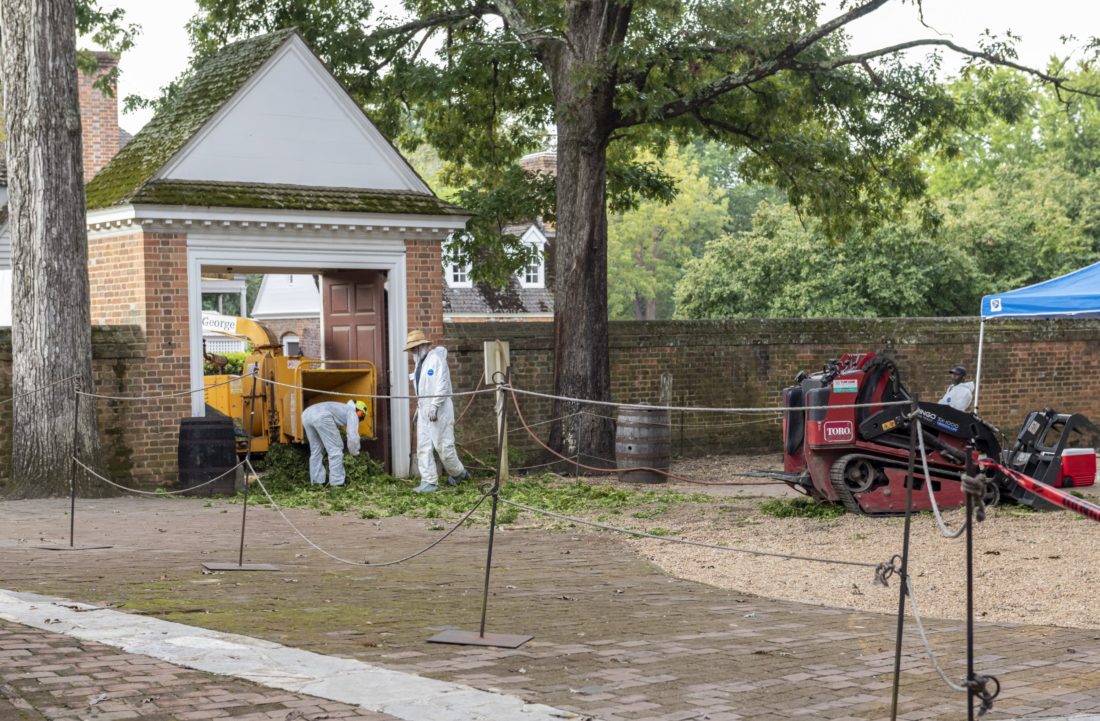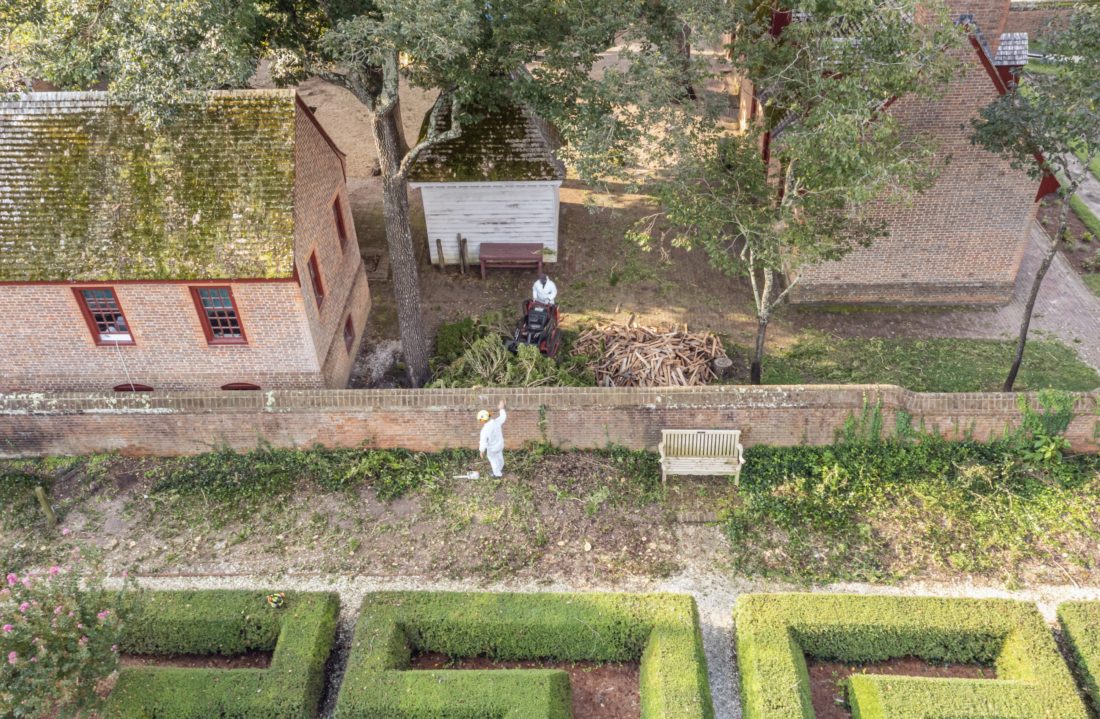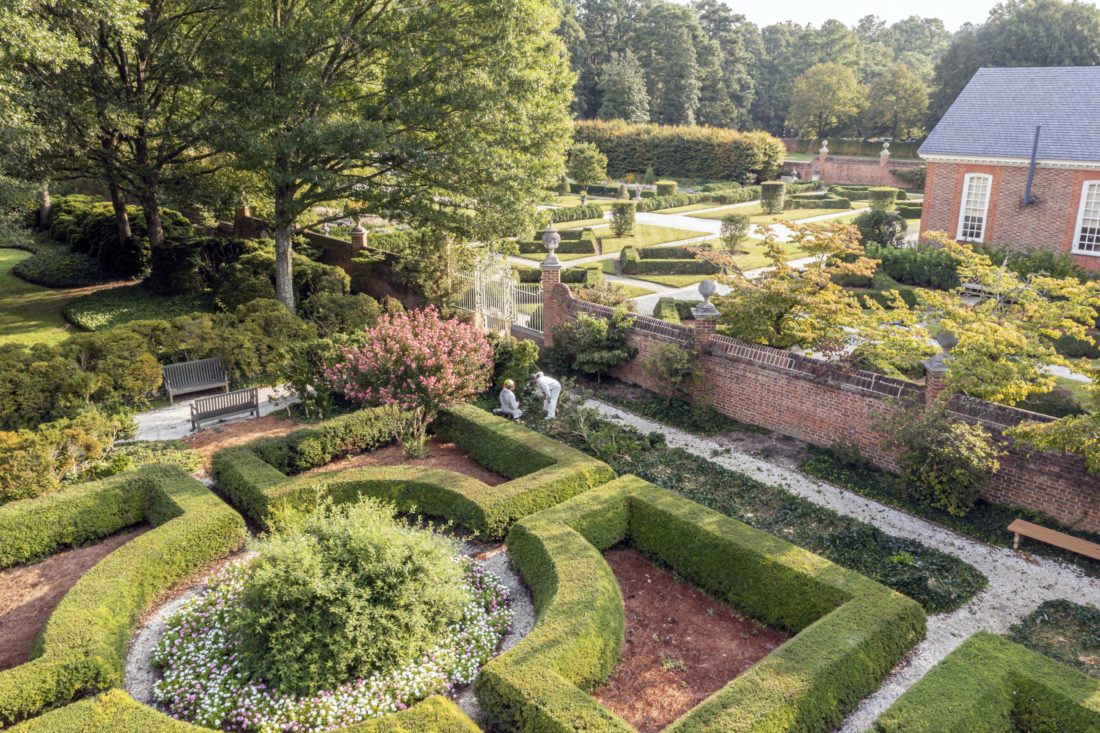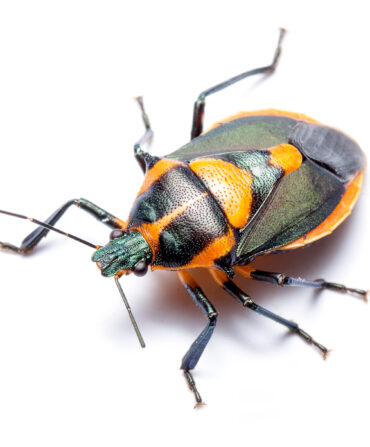The scene was a dystopian paradox. In early August, against the backdrop of the Georgian brick architecture and cobblestoned streets of Colonial Williamsburg, a team of landscapers in Tyvek suits stood inside the garden of the Ludwell-Paradise house, ripping up hundred-year-old boxwoods and heaving them into a woodchipper before burning the remaining ground cover. That’s the protocol for combating boxwood blight, a highly contagious fungal disease that infects the leaves and shoots of boxwoods, turning the plant black before stripping it of its leaves and killing it.
“We dug large holes and dumped the leaves and the wood chips in,” says Jon Lak, a landscape manager at Colonial Williamsburg. Since the fungus’ sticky spores can spread through fallen leaves and soil as well as cling to clothing or animals, there’s no such thing as too much precaution. “We were burning the ground cover, misting to keep dust down, and spraying sanitizer. We had a decontamination chamber where you had to change clothes before leaving the area.”

Boxwood blight was first detected in the United States in North Carolina in 2011, and in Virginia soon after. In fact, two years ago, it was identified in a Williamsburg neighborhood just two thousand feet from Colonial Williamsburg’s Merchants Square, but the landscape team worked tirelessly to delay its spread. “It was never a matter of if we get it, it’s always been a matter of when,” says Melissa Sharifi, the landscape manager tasked with overseeing Colonial Williamsburg’s historic areas.
In July, a maintenance technician noticed black spots—the tell-tale sign of blight—on the leaves of a boxwood shrub at Ludwell-Paradise. “It’s right in the heart of the historic area and one of the last places we wanted to get hit,” Sharifi says. “There isn’t a ton of foot traffic there, but you can’t control deer or birds or other animals, and that’s probably where it came from.” Because blight had infected the entire garden—which is walled in on all sides by ten-foot-tall boxwood—Lak and his team stripped it clean. “It’s the largest boxwood blight garden removal in the U.S. that I know of,” Sharifi says.
Although the Colonial Williamsburg landscape team—with the help of the Virginia Tech Boxwood Blight Task Force—had been educating visitors and employees alike on the horrors of boxwood blight for years, once they detected the first case on the property, the team immediately ramped up these efforts, holding training events on how to recognize the disease.
Sure enough, not one hour after the first training session, another maintenance worker spotted early signs of the fungus in Providence Hall’s garden. “Because we caught it early—it wasn’t showing the black spots yet; the leaves just looked greasy—and it’s outside the historic area, we thought it would be a good place to try a different method,” Sharifi says. “We cut out only the infected part of the plants, then burned the immediate area and fenced off the garden with deer netting. That was in early August, and as of now, it hasn’t spread further.”
Blight has been detected in a few of the property’s other gardens, including the St. George Tucker House and the Governor’s Palace. “We’re taking it garden by garden,” says Joanne Chapman, director of landscaping services. “Depending on how extensive the infection is, we’re either removing it all or just removing small portions. In some places we’ve cut the plants down to their stumps and we’re curious if that will flush out the disease. It’s an experimental approach.”

That strategy also pertains to how the team moves forward. In Ludwell-Paradise, they have planted mustard seed where the boxwoods once grew. “It’s a natural biofumigant for soil,” Sharifi says. “It kills the fungus, weeds, and insect eggs that may be infected with blight. Then we will terminate the mustard seed, till it under, and hopefully it fumigates the ground.” Once they’re confident no blight remains, they may consider replanting a blight-resistant boxwood cultivar—or change the look of the garden all together. “There was boxwood here in the colonial era, but probably not to the extent that was planted during the restoration,” Chapman says. The team may use this opportunity to create more historically accurate gardens.
And although there is no cure, treating uninfected plants with fungicide can curb the spread, as can educating the public. “When boxwood blight is detected, people feel like they’ve done something wrong,” Sharifi says. “But it’s no one’s fault. It’s spread by birds and dogs and the mailman. For people to be ashamed or angry, that’s not the way to deal with it. It only becomes your fault if you ignore it.”








